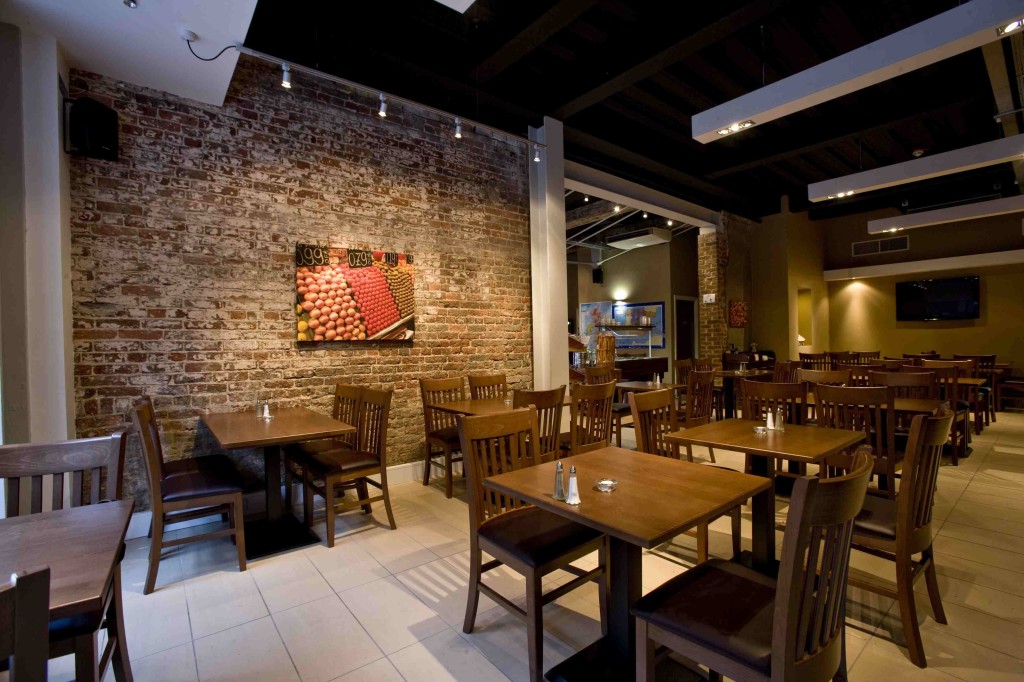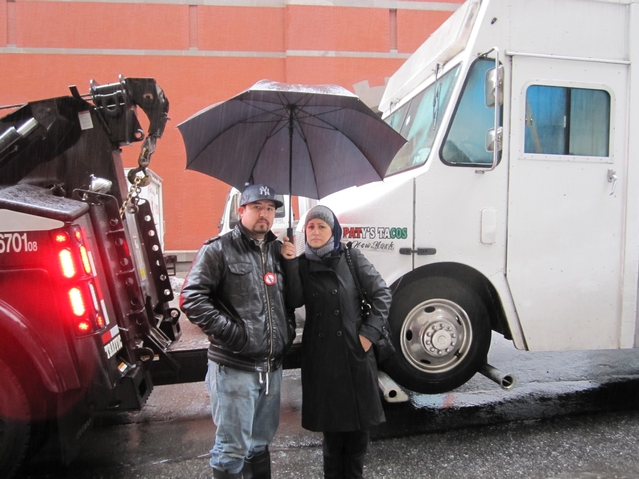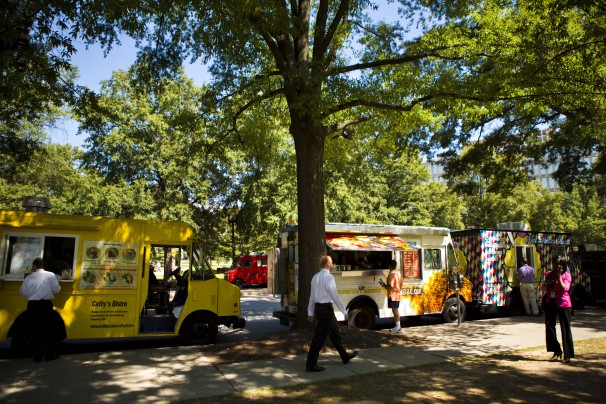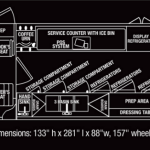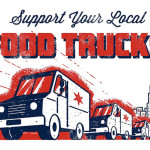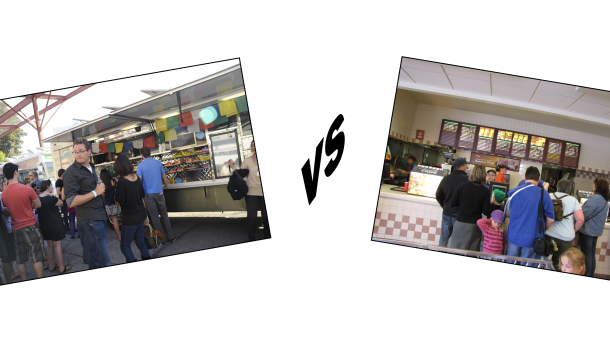
In November of 2012, the Institute for Justice (IJ) released Seven Myths and Realities About Food Trucks: Why The Facts Support Food-Truck Freedom. The report, authored by Bert Gall and Lancée Kurcab , tackled several arguments used in favor of laws that limit the growth of the mobile food vending industry. These arguments were debunked using facts and real-world examples. The IJ believes that “these laws do not advance public health and safety, and serve no other purpose than to ‘protect’ restaurants from competition from food trucks”. Here are the main points and counter arguments discussed in the report.
MYTH #1: The presence of food trucks is harmful to a city’s restaurant industry.
REALITY: The presence of food trucks does not hurt a city’s restaurant industry, but instead helps it.
The report shows that more players in the food industry, including food trucks, will definitely bolster the restaurant industry as a whole. Austin and LA’s vibrant food scene was cited, the latter being the birthplace of the modern day food truck but still has a booming restaurant scene. Food trucks have been drawing crowds of locals and tourists alike and have given new life to otherwise sleepy neighborhoods. The increase in people visiting will benefit all businesses in an area.
Food trucks are also great advertising and are a good way to introduce your product and reach new customers. This can be seen in the number of restaurants and even food chains who acquire a food truck to supplement their current operations.
Food trucks may also be the start of a potential brick and mortar restaurant. A ‘real’ restaurant is still the target of most food truck owners and it has become a less costly way to test run a new concept. The lower cost will encourage more entrepreneurs to get into the food industry and is a good starting point for those who lack funding for a traditional restaurant.
MYTH #2: Trucks have an “unfair” advantage over restaurants because of their mobility.
REALITY: It is true that food trucks’ mobility allows them to serve customers in different parts of a city, but any advantage that this provides is offset by the many disadvantages of being a mobile operation.
Having a fixed location of course makes a restaurant easier to find and this familiarity and constancy is what most customers look for in choosing what to eat. Restaurants have comfortable and ample seating, table-service, can accommodate more people, has climate-control, and are not at the mercy of bad weather. No one would like to eat a taco that is soggy from the rain while standing in the freezing cold. Restaurants do not breakdown like food trucks. Also, it is easier for restaurants to get a liquor license which is a major source of income.
MYTH #3: Trucks have an “unfair” advantage over restaurants because they are not subject to the same set of costs.
REALITY: Restaurants generally do have higher costs than food trucks (e.g., buying or leasing restaurant space), but their return for paying all of those costs is getting the benefit of a fixed location and thus avoiding the many disadvantages that food trucks have.
Though relatively lower to start-up, food trucks also have the same various operating costs that restaurants have and even more. Food trucks also need insurance, licenses and permits, pay taxes, and even rent on spots. Aside from these, food trucks need to associate with a commissary, fuel up, and get multiple licenses if one wants to operate in another jurisdiction.
MYTH #4: Food trucks have an “unfair” advantage over restaurants because operating a food truck is easy.
REALITY: Just like running a restaurant, running a food truck is extremely hard work.
Restaurants may even have the upper hand when it comes to this. First, consider the work space that operators cook in. This also includes the limited space for supplies and the fact that all prep work needs to be done off the truck. Earnings are also kind of capped, since you can only serve a certain number of customers from a food truck and people also tend to eat more when in a restaurant. In this argument restaurants definitely have more stability.
MYTH #5: Food trucks are unsanitary “roach coaches.”
REALITY: According to the available evidence, food trucks are generally just as clean and sanitary as restaurants.
The same as restaurants, food trucks are also subject to health inspections. Maybe even more often than restaurants are checked.
MYTH #6: Food trucks cause harmful sidewalk congestion.
REALITY: No evidence supports the assertion that food trucks cause harmful sidewalk congestion.
In a test conducted by the IJ, it was found out that foot traffic on the sidewalk did not drastically increase due to the presence of a food truck and travel time of a pedestrian around the block varied only one second when there was a food truck around. Also in order to not arouse the ire of the neighborhood, which is also the truck’s primary clientele, food truck owners make sure that they do not impede the day to day activities of the communities they operate in.
MYTH #7: Food trucks create a special trash problem because their customers are especially prone to littering.
REALITY: Food-truck customers are not especially prone to littering, and food-truck operators act responsibly to ensure that trash is properly disposed.
Just like any consumer who buys food or take out, this activity generates trash and it has never been established that food truck customers are more prone to littering. Moreover, food trucks are generally required under municipal laws to maintain cleanliness in their immediate area.
Read the full report at:
http://www.ij.org/images/pdf_folder/economic_liberty/vending/7-myths-and-realities.pdf




